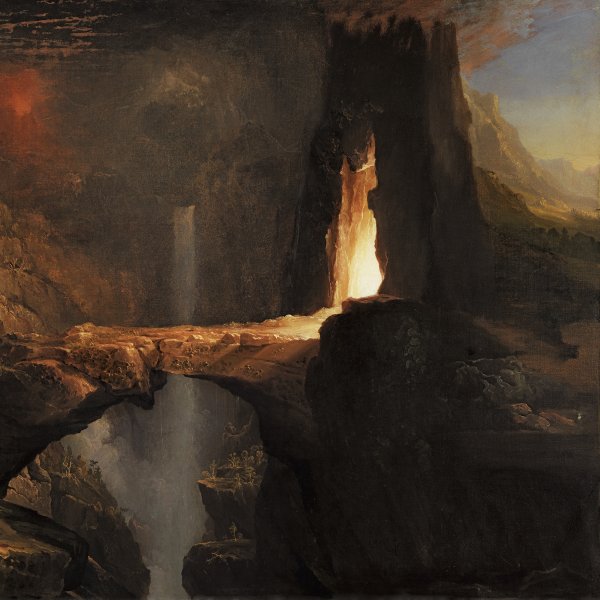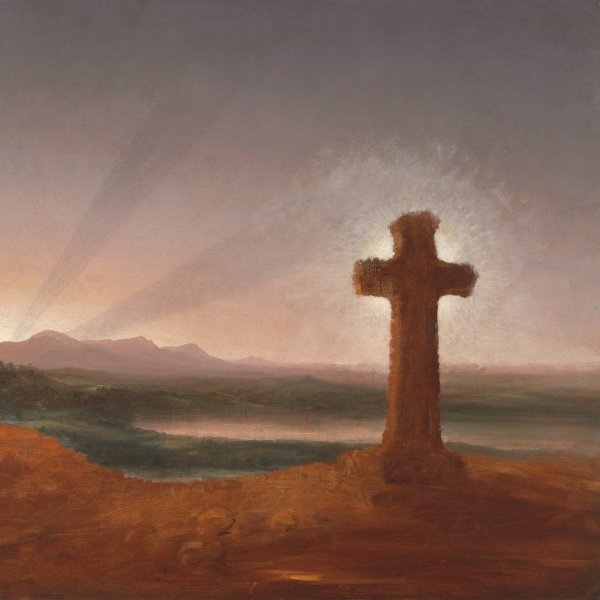Thomas Cole
Boulton-le-Moors, 1801-Catskill, 1848
Thomas Cole
Boulton-le-Moors, 1801–Catskill, 1848
Thomas Cole, the father of the Hudson River School, was the initiator of the nineteenth-century American landscape tradition. He was born in the Great Britain and emigrated to the United States with his family at the age of seventeen. There he became a travelling painter’s apprentice and in 1823 enrolled at the Pennsylvania Academy of the Fine Arts in Philadelphia. Two years later, Cole followed his family to New York. That summer he made his first excursion to the Catskill Mountains and the Hudson River, the scenery of which became the main theme of his paintings from this point onwards. The works that followed this foray, based on the sketches he made from life, were very well received by the New York art scene and earned him fame as a landscape artist.
For Cole landscape painting had a significance that went beyond the mere representation of nature and was endowed with moral connotations linked to the consideration of the new continent as the Promised Land. At the end of the 1820s Cole intensified this idea by painting a series of allegorical landscapes based on Bible stories. Shortly afterwards, in 1829, he set sail for Europe on the first of his two voyages to the Old Continent, which took him to Great Britain, France and Italy, where he viewed the works of the Great Masters of European landscape painting such as John Constable, M.W. Turner, the engravings of John Marin and Claude Lorrain. After three years in Europe he returned to New York and worked on the series entitled The Course of the Empire, 1836 (New York Historical Society), his first important commission, in which he portrayed symbolically the origin, apogee and collapse of a nation.
Throughout his life Cole combined painting with writing poetry and essays, such as Essay on American Scenery, published in 1835, in which he developed his artistic theories.
In 1836 he moved to Catskill, where he had spent his holidays until then, and around 1840 converted to the Episcopal Church, at which point his interest in the spiritual and sublime value of landscape evolved towards a religious interpretation. In 1844 Edwin Frederic Church became a disciple of his. He died young in 1848.
For Cole landscape painting had a significance that went beyond the mere representation of nature and was endowed with moral connotations linked to the consideration of the new continent as the Promised Land. At the end of the 1820s Cole intensified this idea by painting a series of allegorical landscapes based on Bible stories. Shortly afterwards, in 1829, he set sail for Europe on the first of his two voyages to the Old Continent, which took him to Great Britain, France and Italy, where he viewed the works of the Great Masters of European landscape painting such as John Constable, M.W. Turner, the engravings of John Marin and Claude Lorrain. After three years in Europe he returned to New York and worked on the series entitled The Course of the Empire, 1836 (New York Historical Society), his first important commission, in which he portrayed symbolically the origin, apogee and collapse of a nation.
Throughout his life Cole combined painting with writing poetry and essays, such as Essay on American Scenery, published in 1835, in which he developed his artistic theories.
In 1836 he moved to Catskill, where he had spent his holidays until then, and around 1840 converted to the Episcopal Church, at which point his interest in the spiritual and sublime value of landscape evolved towards a religious interpretation. In 1844 Edwin Frederic Church became a disciple of his. He died young in 1848.






